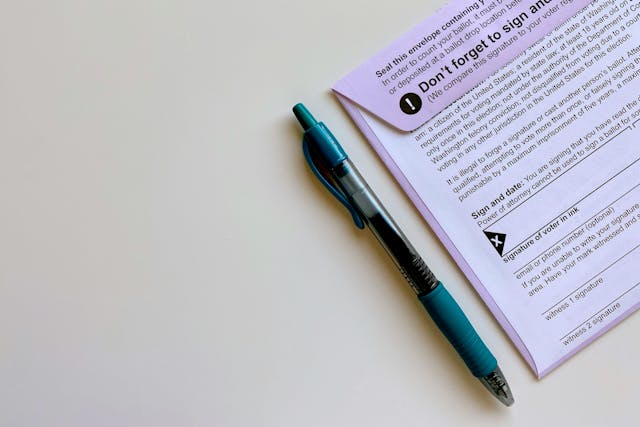Is Obamacare Holding Down the Costs of Health Care?

NATIONAL -- One of the primary selling points for the Affordable Care Act (Obamacare) was affordable insurance premiums with guaranteed issuance. Guaranteed issuance is great for unhealthy people, but is also seen as having the potential of increasing health care costs.
Lower premiums are enticing to healthy people, but anyone who has to use their insurance knows: total cost = premiums + co-pays + deductibles.
One of the early criticisms of Obamacare was that while the premiums were on average 4 percent lower than similar employer-provided plans, the out-of-pocket costs for bronze-level plans averaged 42 percent higher than pre-reform costs.
Granted, most people purchasing bronze-level plans are healthy, low-risk individuals and families who benefit from lower premiums. Individuals and families with considerable health problems actually wind up saving substantial money by enrolling in gold or platinum-level plans.
But there is no magical crystal ball when it comes to predicting health care needs; health care is mostly bought based on past needs.
Even at that, 85 percent of participants chose bronze or silver-level plans, plans with larger deductibles and co-pays, but with lower premiums.
Businesses have followed this lead and have continued to offer more high deductible plans as employer-sponsored health plans -- 18 percent of employer-sponsored health plans have high deductible plans as the only option.
Research, however, shows that the larger deductibles are having a profound effect, mainly in making both doctors and consumers more conscientious of the prices of treatments and medications.
Imagine going to a restaurant with your friends. Right off the bat, a few of your friends are told that they can’t eat there because they don’t have the right contractual agreement. There are no menus with items or prices, and to make matters worse, when you each get the same things, you pay a different price at the end — ranging from nothing to hundreds of dollars.
We would scream if this was how any other industry was run, but we expect and tolerate this from the health care industry. You cannot shop for health care procedures; almost never are you given a price before the service is rendered (or given cheaper options). Even worse, cash prices are set by the insurance contracts so that people paying cash can’t get “too good” of a deal.
Try calling around to different clinics asking how much an x-ray will cost you. They will more than likely be unable to tell you (especially if you have insurance) AND they will probably not dispense the service without their own physicians examining you first (instead of relying on orders/records), thereby doubling up on the cost of office visits.
Patients not being able to make informed decisions on the prices of treatment is against every capitalist principle there is. This has been a common theme of medical billing for years — nothing new or created by Obamacare. Patients should be able to seek alternative treatments or providers, or even choose not to accept treatment.
Once patients and doctors start looking at medicine from an economic perspective -- the best care, for the best price -- the health care consumer wins.
Deductibles and Co-pays: Helping Keep Health Care Costs Down?
The Health Research Institute (HRI) issued its outlook report for the health care industry, which is expected to grow 6.8 percent in 2015. While there were multiple inflationary features driving the growth, one of the biggest deflationary features was the new breed of "healthcare price shoppers:"
The prevalence of high-deductible health plans is spawning a new class of healthcare shoppers: price sensitive and willing to consider that less may be more.
When patients are forced into thinking about health care costs, they find ways to get adequate care at cheaper prices. This creates a profound deflationary pressure, measured at 2 percent by the HRI outlook report.
When looking for ways to cut health care expenses, medication is often one of the first places to start, with15 percent of total health care expenses tied up in prescription medications.
The other significant savings strategy listed in the outlook report was that consumers with high deductible plans are likely to use retail clinics, which charge significantly less than traditional medical services.
But it's also not all about cost. The HRI outlook report notes that health care has to be an industry that is geared toward serving its customers in both a personal and cost-effective manner:
But real success and profitability will go to the insurers, drug makers, and healthcare providers that deliver highly personalized customer experiences at a competitive price.
It's not about patients doing without (or establishing death-panels), it's about the health care industry and the consumers acting like any other business in America: providing the best services possible at the most competitive price.
Not Everyone Will Win From Higher Deductible Plans
While the health care industry and consumers as a whole benefit from the higher deductible plans, not everyone is benefiting equally (and some not at all).
For the healthy, higher deductibles coupled with wise health care shopping choices will bring about real savings.
Those with significant medical problems also benefit, because many of the Obamacare high deductible plans pay 100 percent after the out-of-pocket maximum without further co-pays.
The losers, however, are the families with the once-every-decade health problem, who are stuck trying to find a way to pay for a completely unforeseen medical expense.
This is the unfortunate reality of insurance: it cannot ever protect against every contingency.
Critics of Obamacare predicted a health care catastrophe, but after the first full year of its existence, the reality is something different. The health care industry is becoming more efficient.



